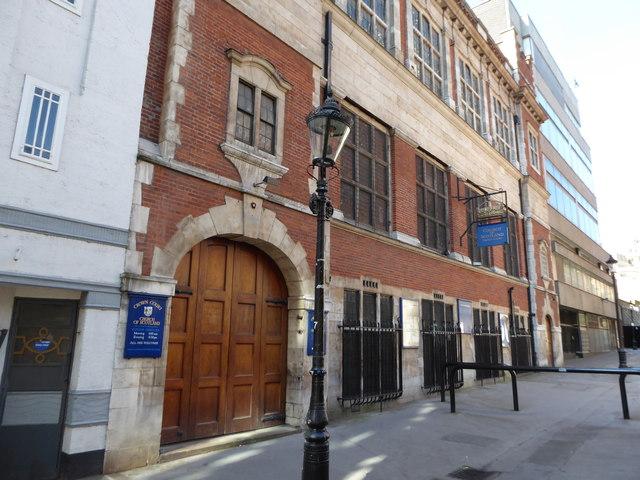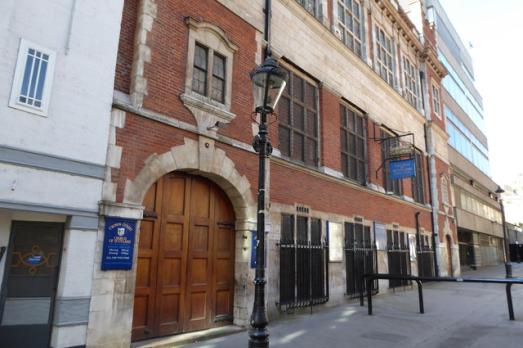The first formal records of what is now Crown Court Church date from 1711. However, it is clear that the congregation existed somewhat earlier than that, possibly becoming established around the time of the Union of the Parliaments in 1707. The original congregation met in St Peter’s Court, off St. Martin’s Lane, and grew steadily as the number of Scots in London increased. In 1719 this Scottish Kirk moved to a new location in Covent Garden, where it has remained ever since, with the present building replacing the original in 1909. The title 'Crown Court Church' is drawn from the name of this site, although it also looks back to the Union of the Crowns of 1603.
The church originally owned the whole block of ground on the corner of Russell Street and Crown Court, with the original church facing into Crown Court. However, in the early 20th century the Fortune Theatre bought the corner site where it now stands. Crown Court Church retained a right of access from Russell Street and the entrance corridor, lined with portraits of past ministers, dovetails with the stage of the Fortune Theatre.
The current building was designed by the architect Eustace Balfour. It is built of red brick with Portland stone dressings and a slate roof. As you enter the sanctuary from the Russell Street corridor is a stone plaque commemorating the 'raising of the Kirk of the Crown of Scotland' laid on 12 May 1909 by former Prime Minister Arthur Balfour MP (Eustace Balfour’s eldest brother). Lady Frances Balfour, was one of the highest-ranking members of the British aristocracy to assume a leadership role in the women's suffrage movement, was strongly committed to Crown Court and was instrumental in raising the funds necessary to build the church.
The baptismal font is made of Iona marble, reputed to have been the last quarried on the island, and the Communion Table has an inset of the same stone.
The arms above the Communion Table are the Royal Arms of King George I, who was monarch when the first church was built in 1719. On the rear wall is a plaque in memory of the soldiers of the Ninth (Scottish) Division who died in the Great War and subsequent conflicts. This is the only memorial to the Division apart from the cairn of undressed stones at Point du Jour, near Arras, in the Pas de Calais. There is also a memorial to the 29 members of the congregation who fell in the Great War.
On the left of the Russell Street door is a memorial to James Braidwood, an elder and Sunday School Superintendent who was also the First Superintendent of the London Fire Brigade. He died while fighting the 'Great Fire of 1861' at Tooley Street, remembered as second only to the Great Fire of London itself.


